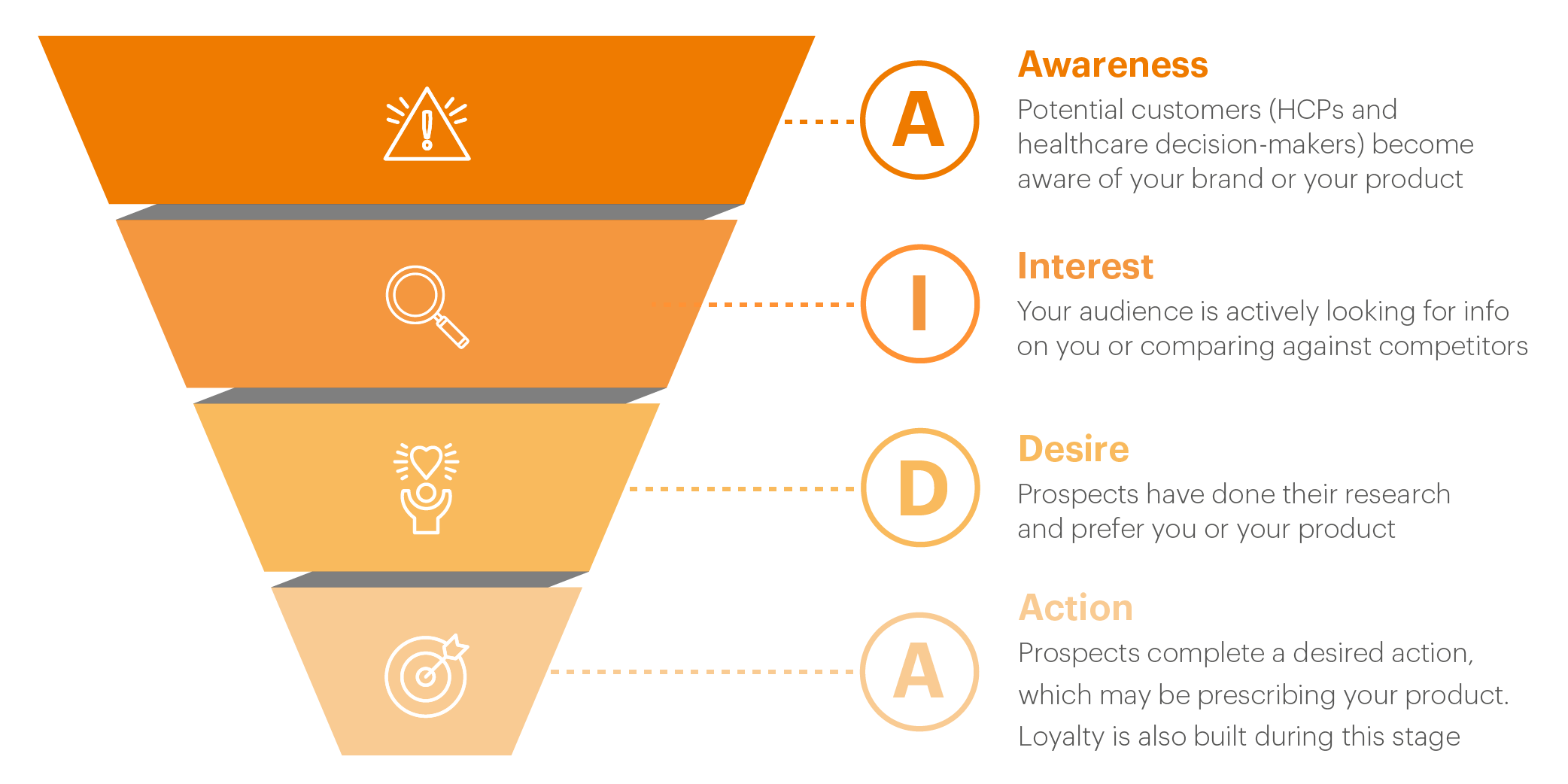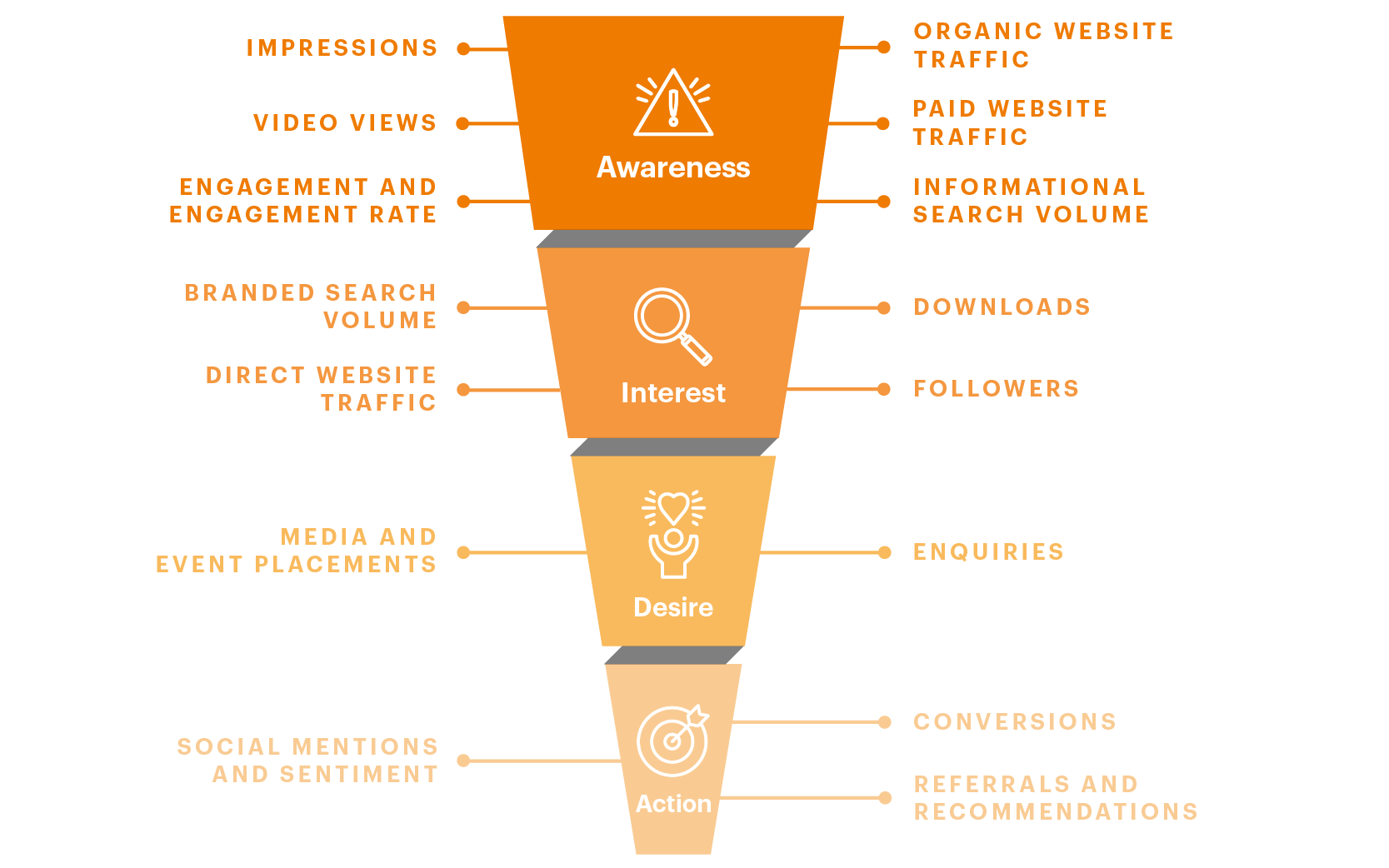
KPIs, shorthand for key performance indicators, measure a particular activity or action to assess its success. There are countless examples within healthcare: health services like the NHS, for one, might track waiting lists or the cost of treating a particular patient demographic.
But here, we’re looking at KPIs in healthcare communications specifically and how they can benefit pharma, medtech and biotech companies.
Without measuring how you or your communications are currently performing (or underperforming), how do you hope to find opportunities to develop and grow?
Metrics are key to answering those questions, but you need to look at the right metrics. To find them, try flipping your thinking around and working backwards – you first need to define your business’ goal and what’s keeping you from achieving it. That’s because there are countless KPIs to consider.
Sales metrics such as orders and enquiries are easier to match with overall success, but the lines are a little blurred when it comes to communications, which often begins much earlier in the customer journey.
When identifying the most important KPIs and metrics for your goals, you need to consider the AIDA model (also known as the customer journey). Potential customers generally move through four stages: awareness, interest, desire and action.

Awareness and interest typically focus on building brand awareness (how familiar your target audience is of you and your products), while commercial success is mostly linked with desire and action.
They each have their own KPIs but rely on one another – brand awareness alone mightn’t generate revenue without effective methods of encouraging customers along, and sales are near impossible without any prior awareness among your target audience.
Comms are involved throughout the buyer journey, but especially so in the early stages, as a vehicle for building brand awareness and carrying audiences towards action. Below are just a few metrics and the objectives they address:

It’s easy to set your sights on only the most obvious metrics of success, such as revenue, but they’re only part of the process. Your audience is unlikely to be in a position to prescribe a treatment or buy a medical device, for example, unless you have an established brand and reputation. Startups and growing companies especially often don’t have that luxury.
Building visibility and authority comes first, something that even the biggest names in pharma and healthcare had to contend with at the start of their journeys.
The challenge isn’t only in identifying and implementing the right metrics – it also comes in communicating their importance to key stakeholders.
Especially at a startup or small company with little to no experience in marketing communications, there may be a reluctance to invest in activities that don’t get immediate results, such as creat
Using the AIDA model and KPIs that are relevant to each of its stages can help you do that. Carry out audience profiling – on their wants, needs and struggles – and apply this to the model to visualise the journey of your target customer and how the metrics that come earlier in the process can also contribute to your end goal.
Discover what we do in healthcare communications, from corporate comms to brand development, or get in touch to find out how we can help you.